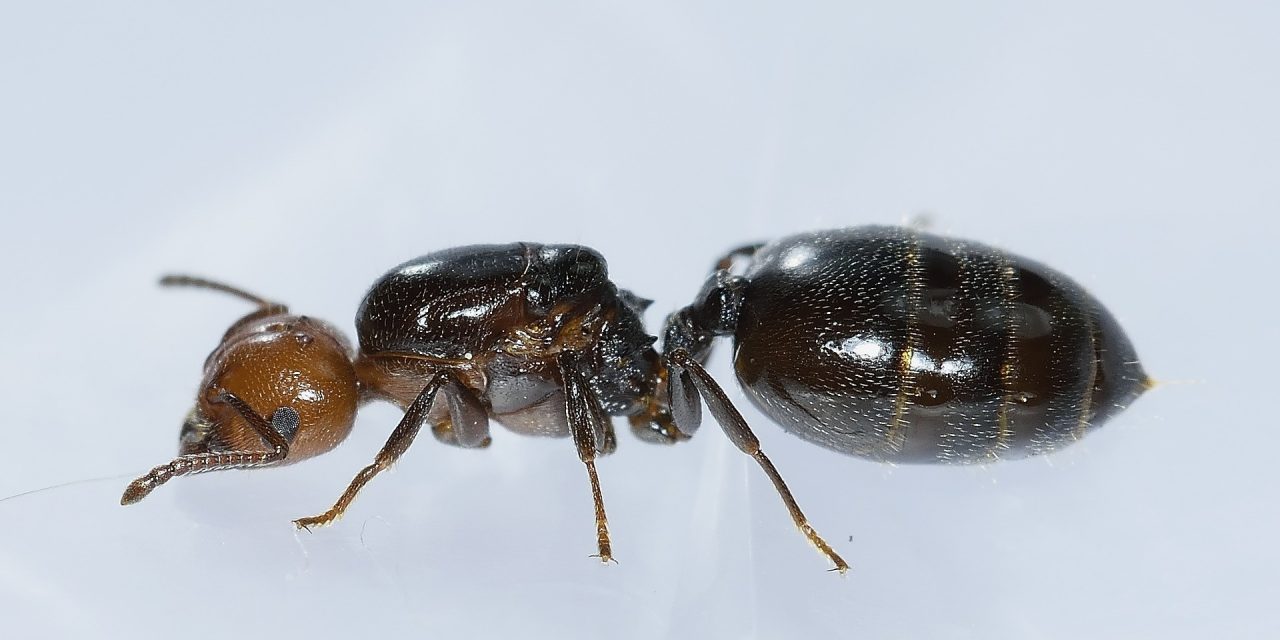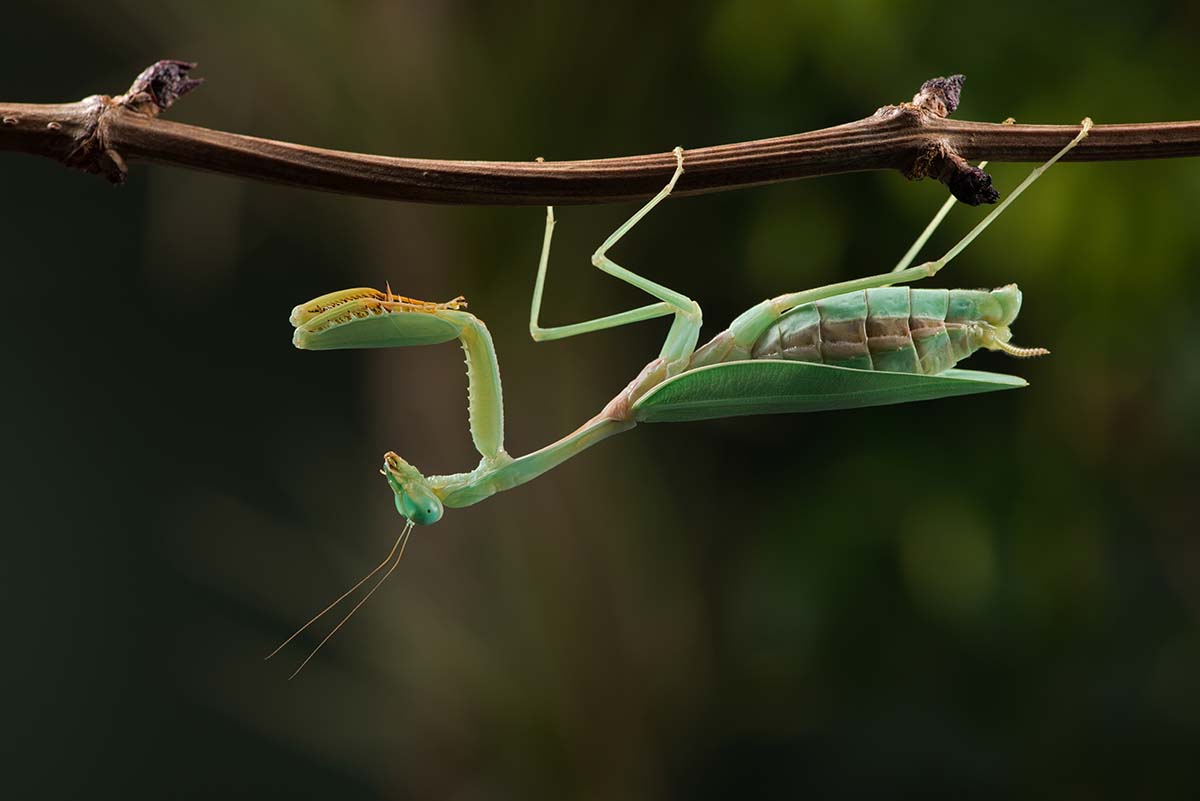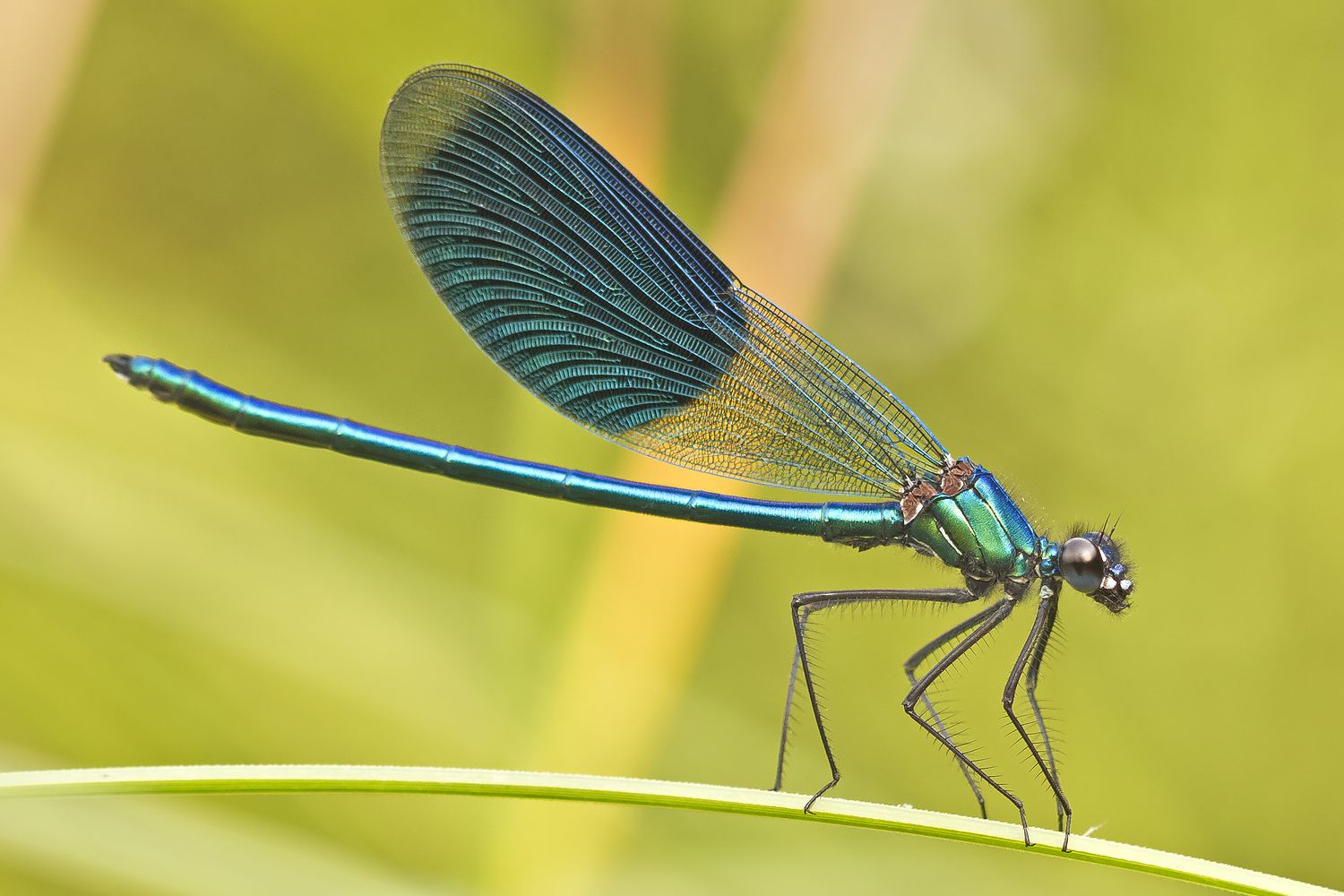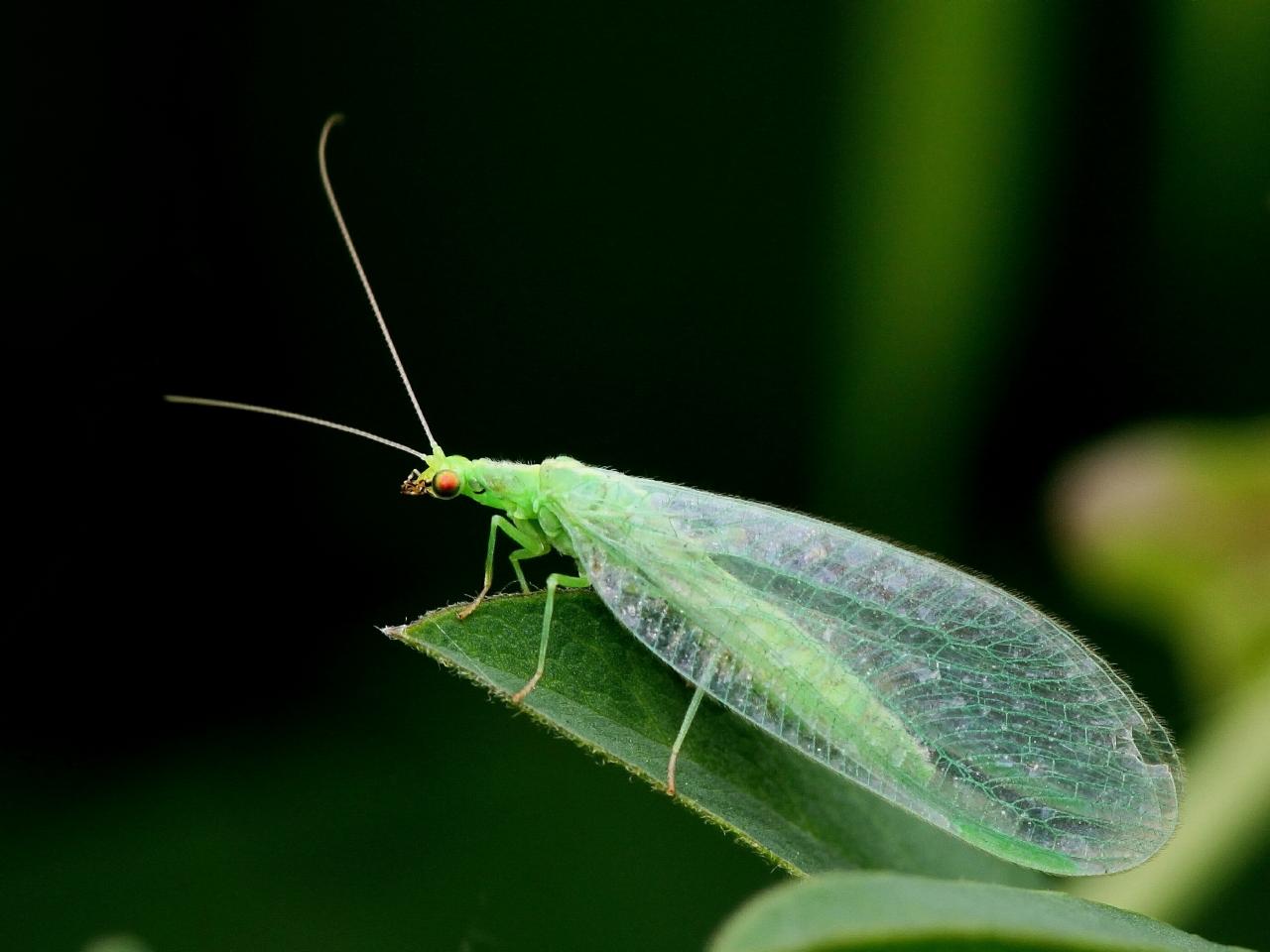Home>Gardening News and Trends>Latest News>Where Have All The Insects Gone


Latest News
Where Have All The Insects Gone
Modified: January 22, 2024
Stay up to date with the latest news on the disappearance of insects. Discover why these vital creatures are vanishing and the potential consequences for our environment.
(Many of the links in this article redirect to a specific reviewed product. Your purchase of these products through affiliate links helps to generate commission for Chicagolandgardening.com, at no extra cost. Learn more)
Table of Contents
- Introduction
- The Importance of Insects in Ecosystems
- Declining Insect Populations: Causes and Concerns
- Pesticide Use and its Impact on Insects
- Habitat Destruction and Fragmentation
- Climate Change Effects on Insect Populations
- Light Pollution and its Effects on Nocturnal Insects
- Additional Factors Contributing to Insect Decline
- Consequences of Insect Population Decline
- Efforts to Preserve Insects and Their Habitats
- Conclusion
Introduction
Insects, often overlooked or disregarded, play a critical role in the balance and functioning of ecosystems. These tiny creatures are responsible for pollinating plants, decomposing organic matter, and serving as a vital food source for other animals. However, in recent years, there has been a noticeable decline in insect populations around the world, causing concern among scientists and environmentalists.
The decline of insect populations is a multi-faceted issue with wide-ranging implications. It is not merely a matter of inconvenience or aesthetics; it has far-reaching consequences for the health of our planet. Insects are essential for maintaining biodiversity, ensuring the productivity of agricultural systems, and supporting the intricate web of life on Earth.
There are various factors contributing to the decline in insect populations. The use of pesticides, habitat destruction and fragmentation, climate change, light pollution, and other human activities have all played a role in this ecological crisis. Understanding these causes is crucial for developing effective conservation strategies to mitigate the consequences.
In this article, we will explore the reasons behind the decline of insect populations and the potential consequences of this phenomenon. We will also examine the efforts being made to preserve insects and their habitats, highlighting the importance of collective action to address this issue.
The Importance of Insects in Ecosystems
Insects may be small in size, but their impact on ecosystems is immense. They play a crucial role in various ecological processes, making their declining populations a matter of global concern.
One of the most vital roles insects fulfill is that of pollinators. They visit flowers in search of nectar and, in the process, transfer pollen from one flower to another, enabling the reproduction of countless plant species. Approximately 75% of the world’s flowering plants depend on animal pollinators, including bees, butterflies, beetles, flies, and moths. Without their diligent pollination efforts, many plants would struggle to produce fruits and seeds, leading to a decline in plant species diversity and negatively impacting other organisms that rely on these plants for food and shelter.
In addition to pollination, insects also serve as decomposers, breaking down dead organic matter and recycling nutrients back into the soil. They play a critical role in the decomposition process, helping to maintain nutrient cycles and sustain healthy soil ecosystems. Without insects, debris and waste would accumulate, leading to the loss of valuable resources and disrupting the delicate balance of ecosystems.
Insects also act as a vital food source for numerous other animals. Birds, bats, reptiles, amphibians, and many mammals rely on insects as their primary or supplemental diet. The decline in insect populations can have cascading effects on higher trophic levels, impacting the survival and reproductive success of these animals. It can disrupt food webs, leading to imbalances and potentially endangering entire ecosystems.
Furthermore, insects contribute to the control of pests and disease vectors. Some insects, such as ladybugs and lacewings, feed on aphids and other pests that can harm crops. By keeping pest populations in check, these beneficial insects reduce the need for synthetic pesticides, promoting a more sustainable and environmentally friendly approach to agriculture.
Overall, the presence of insects in ecosystems is integral to maintaining biodiversity, supporting ecosystem services, and ensuring the overall health and functioning of the natural world. Their decline can have far-reaching consequences, affecting everything from food production to the stability of ecosystems.
In the following sections, we will explore the various factors contributing to the decline of insect populations and the potential consequences of this decline on our environment and society.
Declining Insect Populations: Causes and Concerns
The declining populations of insects have become a pressing environmental issue with significant implications. Understanding the causes behind this decline is crucial for developing strategies to address and mitigate the problem.
One of the primary factors contributing to the decline of insect populations is the excessive use of pesticides. Agricultural practices heavily reliant on pesticides disrupt the delicate balance of ecosystems by directly impacting non-target species, including beneficial insects. Insecticides can kill off pollinators and other insects essential for the functioning of ecosystems. Additionally, the widespread use of systemic insecticides, such as neonicotinoids, can have long-lasting effects as these chemicals persist in the environment, accumulating in soil and water systems.
Habitat destruction and fragmentation also play a significant role in the decline of insects. As habitats are lost due to urbanization, deforestation, and intensive agriculture, insects lose their essential breeding and foraging grounds. Fragmentation further exacerbates the issue by isolating populations, reducing genetic diversity, and limiting the ability of insects to migrate or disperse to new habitats.
Climate change is another contributing factor to the decline of insect populations. Rising temperatures, altered precipitation patterns, and extreme weather events can disrupt insect life cycles, habitat suitability, and food availability. Insect species that are unable to adapt or migrate to more suitable environments may face reduced reproductive success, shrinkage of their geographic range, or even extinction.
Light pollution is an often-overlooked stressor impacting nocturnal insects. Artificial nighttime lighting disrupts their natural behaviors, such as mate-finding and foraging. This interference can lead to altered circadian rhythms, decreased reproductive success, and overall population decline.
Other factors contributing to the decline of insects include air pollution, invasive species, overexploitation, and climate-related shifts in plant-pollinator interactions. Each of these factors, combined with the others, adds to the overall stress on insect populations and poses a significant threat to their survival.
The decline of insect populations raises concerns at multiple levels. Ecologically, it threatens the stability and functioning of ecosystems, jeopardizing the services they provide, such as pollination, nutrient cycling, and pest control. Economically, it affects food production, as many crops rely on insect pollination for successful yield. The loss of insects also impacts industries dependent on insects, such as silk production and honey beekeeping.
Furthermore, the decline of insects poses a threat to human health. Some insects, such as mosquitoes, are vectors for diseases such as malaria, dengue fever, and Zika virus. The reduction in insect populations may result in disrupted disease transmission dynamics and an increased risk of disease outbreaks.
In the next sections, we will examine the specific impacts of insect population decline and explore the efforts being made to preserve insects and their habitats.
Pesticide Use and its Impact on Insects
Pesticides, including insecticides, herbicides, and fungicides, have been widely used in agriculture and pest control for decades. While these chemicals are intended to target specific pests or unwanted plants, they can have unintended consequences on non-target organisms, including insects.
The excessive use of insecticides has had a severe impact on insect populations. Many of these chemicals are broad-spectrum, meaning they can kill a wide range of insect species, including beneficial ones such as pollinators, predators, and natural enemies of pests. This indiscriminate targeting disrupts the delicate balance of ecosystems and can lead to a decline in insect biodiversity.
Systemic insecticides, particularly neonicotinoids, have come under scrutiny due to their long-lasting effects and potential to harm pollinators. These insecticides are taken up by plants and are present in various plant tissues, including the nectar and pollen consumed by bees and other pollinators. Prolonged exposure to neonicotinoids can impair the foraging and navigation abilities of bees, weaken their immune systems, and ultimately lead to population declines.
Neonicotinoids are not the only concern in terms of pesticide impact on insects. Many conventional insecticides have acute toxic effects, meaning they can kill insects shortly after exposure. These chemicals are often used in large quantities, sprayed aerially or applied through irrigation systems, resulting in widespread exposure for both target and non-target organisms.
Furthermore, pesticides can have sub-lethal effects on insects, meaning they may not kill them outright but still impact their physiological and behavioral functions. Sub-lethal exposure to certain insecticides can lead to reduced reproductive success, altered feeding behavior, impaired immune systems, and increased susceptibility to diseases.
It is important to note that while pesticides play a role in agriculture and pest management, there are alternatives and more sustainable approaches that can be employed. Integrated Pest Management (IPM) seeks to minimize pesticide use through a combination of biological controls, cultural practices, and judicious use of chemicals only when necessary. This approach aims to reduce harmful impacts on non-target organisms, including insects, while still effectively managing pests.
Regulations and policy measures have been implemented in some countries to restrict or ban the use of certain pesticides known to be harmful to insects. However, more comprehensive actions at global and local levels are necessary to address the widespread use of harmful chemicals and promote ecologically responsible pest management practices.
In the next sections, we will explore other factors contributing to the decline of insect populations and the potential consequences of this decline.
Habitat Destruction and Fragmentation
Habitat destruction and fragmentation have emerged as major drivers of the decline in insect populations worldwide. As human activities continue to encroach upon natural areas and alter landscapes, insects are losing their essential habitats and facing significant threats to their survival.
One of the primary causes of habitat destruction is urbanization. As cities expand, natural habitats are cleared to make way for infrastructure, housing, and commercial developments. This destruction eliminates crucial habitats and disrupts the intricate web of relationships that insects rely on for reproduction, feeding, and shelter. Urbanization also introduces new stressors, such as increased pollution and artificial lighting, which further challenge the survival of many insect species.
Another significant driver of habitat destruction is deforestation. Large-scale clearing of forests for agriculture, logging, and other purposes dramatically reduces the available habitat for insects. Forests are incredibly diverse ecosystems, housing numerous insect species that have adapted to specific niches within these environments. When forests are cleared, these species lose their homes and are left with limited options for survival and reproduction.
Agricultural practices have also contributed to habitat destruction and fragmentation. Intensive farming methods often involve clearing large areas of land for monoculture crops, which results in the loss of natural habitats. The use of heavy machinery and chemical inputs further degrade the quality of the remaining habitats. Additionally, the widespread use of pesticides in agriculture reduces the availability of food and suitable breeding sites for insects, exacerbating their decline.
Habitat fragmentation occurs when large, continuous areas of natural habitats are divided into smaller, isolated patches. This fragmentation disrupts the movement and gene flow of insects, limiting their ability to disperse, find mates, and establish new populations. Smaller habitat patches are also more susceptible to edge effects, where the conditions at the edges differ from the interior, leading to altered microclimates and increased vulnerability to invasive species and disturbances.
Fragmented habitats also suffer from a phenomenon known as the “extinction debt.” Even if some insects initially persist in these isolated fragments, the long-term viability of their populations is threatened. As genetic diversity decreases and interactions with other species become disrupted, the likelihood of local extinctions and the overall decline of insect populations increases over time.
Conserving and restoring habitats are crucial to combatting the decline in insect populations. Efforts should be made to protect and expand natural areas, create wildlife corridors to connect fragmented habitats, and promote sustainable land management practices. By preserving and improving the quality and connectivity of habitats, we can provide insects with the resources they need to thrive and contribute to healthy ecosystems.
In the next sections, we will explore how climate change and other factors contribute to the decline of insect populations and the potential consequences of this decline.
Climate Change Effects on Insect Populations
Climate change is a significant contributing factor to the decline in insect populations. The warming of our planet is altering habitats, disrupting ecological interactions, and affecting the life cycles and distribution of insects.
Rising temperatures directly impact insect physiology and behavior. Many insects are ectothermic, meaning their body temperature is regulated by external environmental conditions. As temperatures increase, insect metabolic rates rise, leading to higher energy demands. This can affect development, reproduction, and overall fitness. For instance, temperature increases can shorten insect lifespans, accelerate their growth and development, or disrupt critical life stages such as pupation or hibernation.
The changing climate also affects the timing and synchrony of insect life cycles with their food sources. For example, plant-pollinator interactions rely on precise timing, with flowers blooming at the same time pollinators are active. Any mismatch between the emergence of insects and the availability of their food sources can disrupt these crucial interactions, leading to reduced reproductive success and population decline.
Climate change can also impact the geographic distribution of insects. As habitats become less suitable for certain species due to shifts in temperature and precipitation patterns, insects may be forced to move to more favorable locations. However, this migration can be impeded by habitat fragmentation and barriers such as urban areas or agricultural landscapes, limiting their ability to adapt and survive.
Extreme weather events, such as droughts, floods, and heatwaves, are becoming more frequent and intense due to climate change. These events can have direct and immediate effects on insect populations. For example, flooding can wash away insect eggs and larvae, while droughts can result in nutrient limitations and dehydration. Additionally, extreme weather events can disrupt the availability and distribution of resources, altering ecological interactions and leading to population declines.
Climate change also influences the spread of diseases and pests that affect insect populations. Warmer temperatures can facilitate the expansion of disease-carrying vectors, such as mosquitoes or ticks, exposing both humans and insects to new risks. Insects already threatened by habitat loss or other stressors may be more susceptible to the consequences of these diseases, further impacting their populations.
Addressing the impacts of climate change on insect populations requires comprehensive global efforts to curb greenhouse gas emissions and mitigate the drivers of climate change. Additionally, adaptive management strategies that focus on preserving and restoring habitat connectivity, promoting ecological resilience, and implementing sustainable land and water management practices can provide some level of protection for insect populations in the face of a changing climate.
In the next sections, we will explore how factors such as light pollution and other human activities contribute to the decline of insect populations and the potential consequences of this decline.
Light Pollution and its Effects on Nocturnal Insects
Light pollution, the excessive or misdirected artificial light at night, is an emerging concern for nocturnal insects. These organisms have evolved to thrive in darkness and rely on the natural cycles of light and darkness to regulate their behavior, reproduction, and survival. However, the increasing presence of artificial nighttime lighting is disrupting these natural rhythms and impacting nocturnal insect populations.
Nocturnal insects, such as moths, beetles, and fireflies, are highly sensitive to light. They have evolved to use moonlight and starlight as their navigational cues, using the brightness and angle of the natural light source to maintain their flight paths and find food sources. Artificial lighting can interfere with these navigation systems, leading to increased disorientation and a higher risk of collisions with objects or vehicles.
One of the most apparent effects of light pollution on nocturnal insects is attraction to artificial light sources. These insects are naturally drawn to light, and when they encounter artificial lights, they can become trapped, exhausted, or vulnerable to predators. This attraction disrupts their normal behaviors, including mating and foraging, potentially leading to decreased reproductive success and overall population decline.
Light pollution can also disrupt the natural light-dark cycles that regulate insect activity and rest. Exposure to continuous or extended periods of artificial light can confuse insects, alter their circadian rhythms, and disrupt their feeding and reproductive patterns. This disruption can have cascading effects on the ecosystem, as other organisms that depend on these insects as prey or pollinators may also be affected.
Nocturnal pollinators, such as moths and certain types of bees, are particularly vulnerable to the effects of light pollution. Their ability to locate and pollinate flowers relies on their unique adaptations to low-light conditions. Artificial lighting can attract these pollinators away from flowers, reducing their effectiveness as pollinators and impacting the reproduction of plants that rely on them for pollination.
Light pollution also has indirect effects on nocturnal insects by altering their habitats. In brightly lit urban environments, the prevalence of artificial lighting can limit the availability of darker areas essential for these insects to find shelter, rest, and reproduce. As their habitat quality declines, their populations may suffer from increased stress, decreased breeding success, and ultimately, population decline.
To mitigate the impacts of light pollution on nocturnal insects, various measures can be implemented. Properly designed outdoor lighting that directs light downward and minimizes unnecessary brightness and glare can reduce the negative effects on insects. Using warm-colored, low-intensity lights can also be less attractive to nocturnal insects compared to bright, cool-colored lights.
Educational efforts and lighting regulations can also help raise awareness about the importance of reducing light pollution and its impacts on insects. By promoting responsible lighting practices and implementing lighting ordinances, communities can work towards preserving the nighttime environment and safeguarding the nocturnal insects that play critical roles in ecosystems.
In the next sections, we will explore additional factors contributing to the decline of insect populations and the potential consequences of this decline.
Additional Factors Contributing to Insect Decline
While pesticides, habitat destruction, climate change, and light pollution are major contributors to the decline of insect populations, there are also other factors at play. These additional factors further exacerbate the challenges faced by insects and add to the overall threat to their survival.
Air pollution, specifically the presence of pollutants such as nitrogen dioxide and ozone, can have detrimental effects on insects. The accumulation of these pollutants in the atmosphere can lead to decreased plant productivity, altered nutrient availability, and changes in the chemical composition of plants. Insects that rely on specific plant species or certain chemical cues may suffer as their food sources become less nutritious or less attractive, impacting their overall fitness and population size.
Invasive species pose a significant threat to native insect populations. Invasive plants and animals can outcompete native species for resources, alter habitats, and disrupt ecological relationships. Invasive species that are aggressive herbivores or predators can directly impact native insects by consuming their food sources or preying upon them. This can result in decreased food availability, increased predation pressure, and ultimately, population declines.
Insects are also affected by overexploitation, particularly through excessive collecting for commercial purposes or as a result of unsustainable practices. Some insects, such as certain species of butterflies or beetles, are highly sought after for their beauty and rarity, leading to illegal trade and unsustainable harvesting. The removal of individuals from populations can disrupt natural breeding patterns, reduce genetic diversity, and have long-term impacts on population densities.
Changes in land use, including the conversion of natural habitats to agriculture or urban areas, can have detrimental effects on insects. The loss of diverse and complex habitats reduces the availability of suitable nesting sites, food sources, and shelter for insects. In addition, the use of heavy machinery, monoculture farming, and the application of synthetic fertilizers and pesticides in agriculture can further degrade the quality of the remaining habitats and expose insects to additional stressors.
Environmental contamination, such as the presence of heavy metals and chemicals in soil and water systems, can also impact insects. These contaminants can accumulate in insect tissues, impair their physiological functions, and lead to reduced reproductive success, developmental abnormalities, and increased susceptibility to diseases. Pollution from industrial activities, mining operations, and improper disposal of waste contribute to these contamination risks.
Understanding and addressing these additional factors are essential for effective insect conservation efforts. It requires a holistic approach that encompasses sustainable land management practices, regulation of commercial activities, monitoring and control of invasive species, and the reduction of pollution in various forms. Only by addressing all these factors can we hope to reverse the decline of insects and restore the health and balance of our ecosystems.
In the next section, we will explore the potential consequences of insect population decline and the importance of preserving these crucial organisms.
Consequences of Insect Population Decline
The decline of insect populations has significant consequences for ecosystems, human society, and the overall health of our planet. The intricate ecological roles that insects fulfill and the services they provide make their decline a matter of great concern.
One of the most immediate consequences is the potential disruption of food webs. Insects play a vital role as prey for numerous other animals, including birds, bats, amphibians, and reptiles. If insect populations decline, it can lead to a decrease in available food for these predators, potentially causing imbalances in ecosystems and threatening the survival of other species.
Another consequence of insect population decline is a potential decrease in pollination services. Insects, particularly bees and butterflies, are crucial pollinators of many flowering plants, including both wild and cultivated species. If the decline continues, it could result in reduced crop yields, impacting food production and leading to economic losses. The loss of diverse plant species that depend on insect pollinators could also negatively impact ecosystem stability and resilience.
Insects also play a critical role in nutrient cycling and decomposition. Their activities break down organic matter and release nutrients back into the soil, contributing to the fertility and health of ecosystems. The decline in insect populations could disrupt this essential process, leading to a buildup of organic matter and a decrease in nutrient availability for plants, potentially affecting overall ecosystem productivity.
The loss of insects can also have indirect effects on other organisms. Many birds rely on insects as a primary food source, especially during the breeding season when they need to feed their hatchlings. A decline in insect populations can have negative consequences for bird populations, potentially leading to reduced reproductive success and population declines for bird species that depend on insects as a primary food source.
Furthermore, insects provide important ecosystem services that directly benefit humans. They are key players in pollination, which is vital for the production of fruits, vegetables, nuts, and seeds. The decline in insect populations could result in reduced crop yields, lower nutritional quality of food, and increased reliance on alternative pollination methods, such as manual pollination, which is labor-intensive and costly.
Additionally, insects contribute to natural pest control by preying on harmful pests that damage crops and spread diseases. As insect populations decline, the pressure from pest insects can increase, requiring greater use of synthetic pesticides, which can have negative environmental and health impacts.
Beyond the ecological and agricultural consequences, the decline of insects also holds cultural and aesthetic significance. Insects play a prominent role in art, literature, and human culture. Their vibrant colors, intriguing behaviors, and diversity contribute to the beauty and fascination of our natural world. The loss of insects would result in the disappearance of these cultural and aesthetic connections, impacting human experiences and wellbeing.
Conserving and protecting insects and their habitats is not only important for the survival of these fascinating creatures but also for preserving the overall health and functioning of ecosystems, ensuring food security, and maintaining the intricate web of life on our planet. In the next section, we will explore the efforts and initiatives being undertaken to preserve insects and mitigate their decline.
Efforts to Preserve Insects and Their Habitats
The declining populations of insects have spurred various efforts and initiatives to preserve these vital creatures and safeguard their habitats. Recognizing the ecological importance and potential consequences of their decline, individuals, organizations, and governments are taking action to mitigate the threats faced by insects.
Habitat conservation is a key aspect of preserving insects. Efforts are being made to protect and restore natural habitats, including forests, wetlands, grasslands, and other ecosystems that provide essential resources and suitable environments for insects. These conservation measures focus on maintaining and increasing habitat connectivity, creating wildlife corridors, and implementing sustainable land management practices that minimize habitat destruction and fragmentation.
Conservation organizations are actively working to raise awareness about the importance of insects and their conservation. Educational campaigns target both the general public and specific stakeholders, such as farmers and policymakers, to promote insect-friendly practices and policies. By highlighting the irreplaceable roles insects play in ecosystems and the potential consequences of their decline, these awareness efforts aim to mobilize action and encourage support for insect conservation.
Research plays a vital role in understanding the factors contributing to insect decline and developing effective conservation strategies. Scientists are conducting studies to assess the status and trends of insect populations, investigate the impacts of various stressors, and identify key areas for conservation. This research informs conservation efforts and helps guide decision-making processes aimed at mitigating threats to insects and their habitats.
Policy measures are being implemented at local, national, and international levels to protect insects and their habitats. Governments and regulatory bodies are setting guidelines and regulations for pesticide use, promoting sustainable agriculture practices, and establishing protected areas to conserve biodiversity and natural habitats. These policies provide a framework for the conservation of insects and encourage a more holistic and sustainable approach to environmental management.
Another important aspect of insect preservation is citizen science. Volunteers, nature enthusiasts, and the general public contribute to insect monitoring projects, recording observations, and collecting data on insect populations and distribution. Citizen science initiatives not only provide valuable data for scientific research but also engage and empower individuals to take an active role in insect conservation.
The establishment of insect conservation programs, both on a local and global scale, is an essential step in addressing the decline in insect populations. These programs focus on specific insect groups, such as pollinators or endangered species, and implement targeted conservation measures. They often involve collaboration between scientists, conservation organizations, governments, and local communities to ensure comprehensive and effective conservation actions.
Efforts to preserve insects and their habitats are of utmost importance for the health of ecosystems, global food security, and the overall sustainability of our planet. By promoting responsible land management practices, reducing pesticide use, protecting natural habitats, and raising awareness about the value of insects, we can make a significant impact in halting the decline of these critical organisms.
In the next section, we will conclude our exploration of the decline of insect populations and the importance of taking action to address this urgent environmental issue.
Conclusion
The decline of insect populations is a grave environmental concern with far-reaching consequences for ecosystems and human society. Insects are integral to the functioning of ecosystems, playing roles in pollination, nutrient cycling, decomposition, and serving as a crucial food source for other animals. The causes of insect decline are diverse and include factors such as pesticide use, habitat destruction and fragmentation, climate change, light pollution, and other human activities.
The consequences of declining insect populations are significant. Disrupted food webs, reduced pollination services, impaired nutrient cycling, and impacts on human agriculture and food security are some of the immediate effects. Furthermore, the loss of insects can have indirect consequences on other species and disrupt cultural and aesthetic connections with the natural world.
Efforts to address the decline of insects and preserve their habitats are underway. These efforts involve habitat conservation, awareness campaigns, scientific research, policy measures, citizen science, and targeted conservation programs. By adopting sustainable land management practices, reducing pesticide use, protecting natural habitats, and fostering public engagement, we can make a meaningful impact in preserving and safeguarding insect populations.
It is essential for individuals, communities, organizations, and governments to collaborate to address this urgent environmental issue. Collective action, rooted in scientific knowledge and guided by sustainable practices, is crucial for reversing the decline of insect populations. Preserving insects and their habitats ensures the health and stability of ecosystems, supports global food security, and maintains the intricate web of life on Earth.
Through our concerted efforts, we have the opportunity to protect these vital creatures and the invaluable services they provide. By cherishing and understanding the importance of insects, we can pave the way for a sustainable and flourishing future for both our planet and ourselves.






